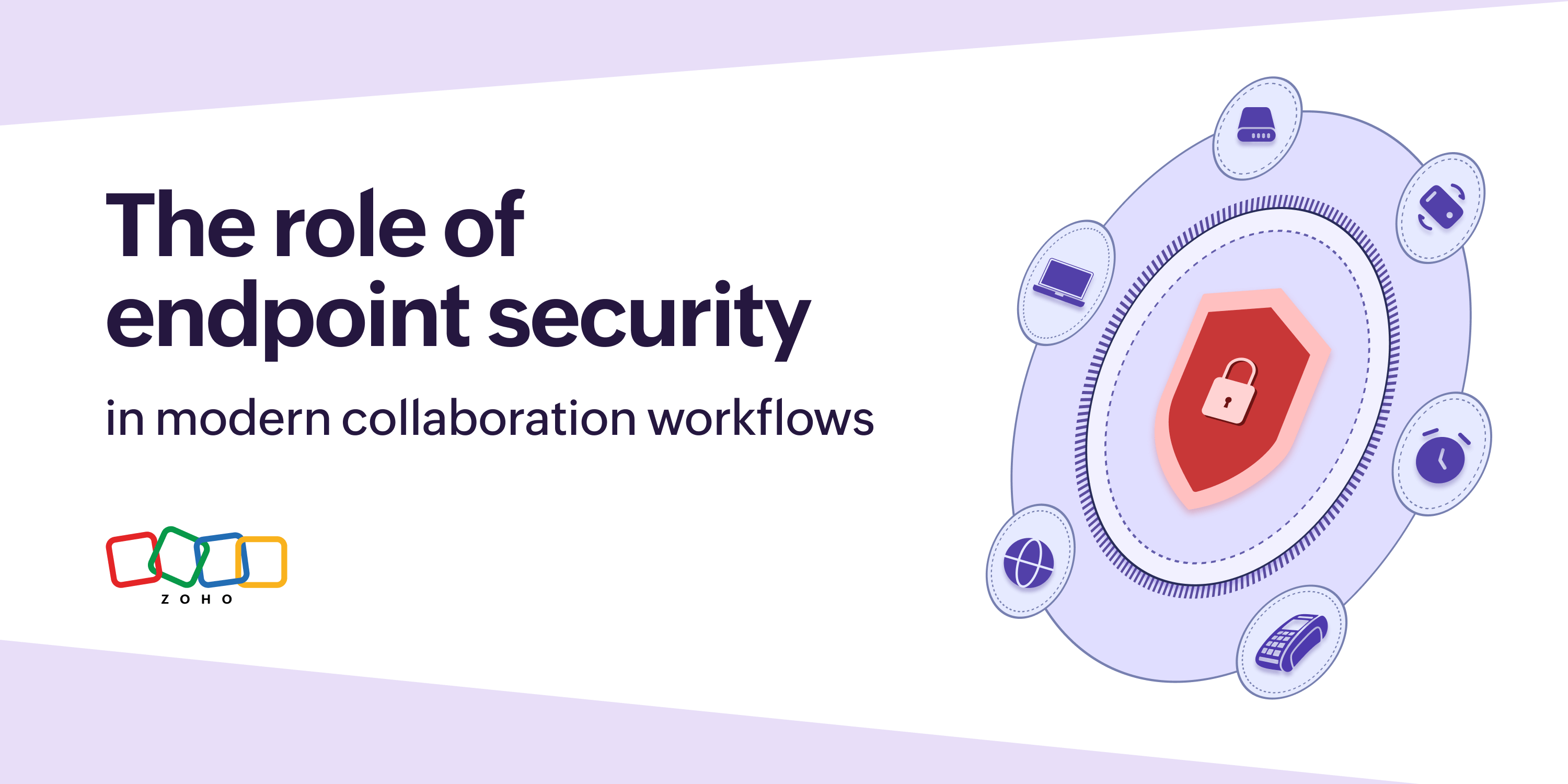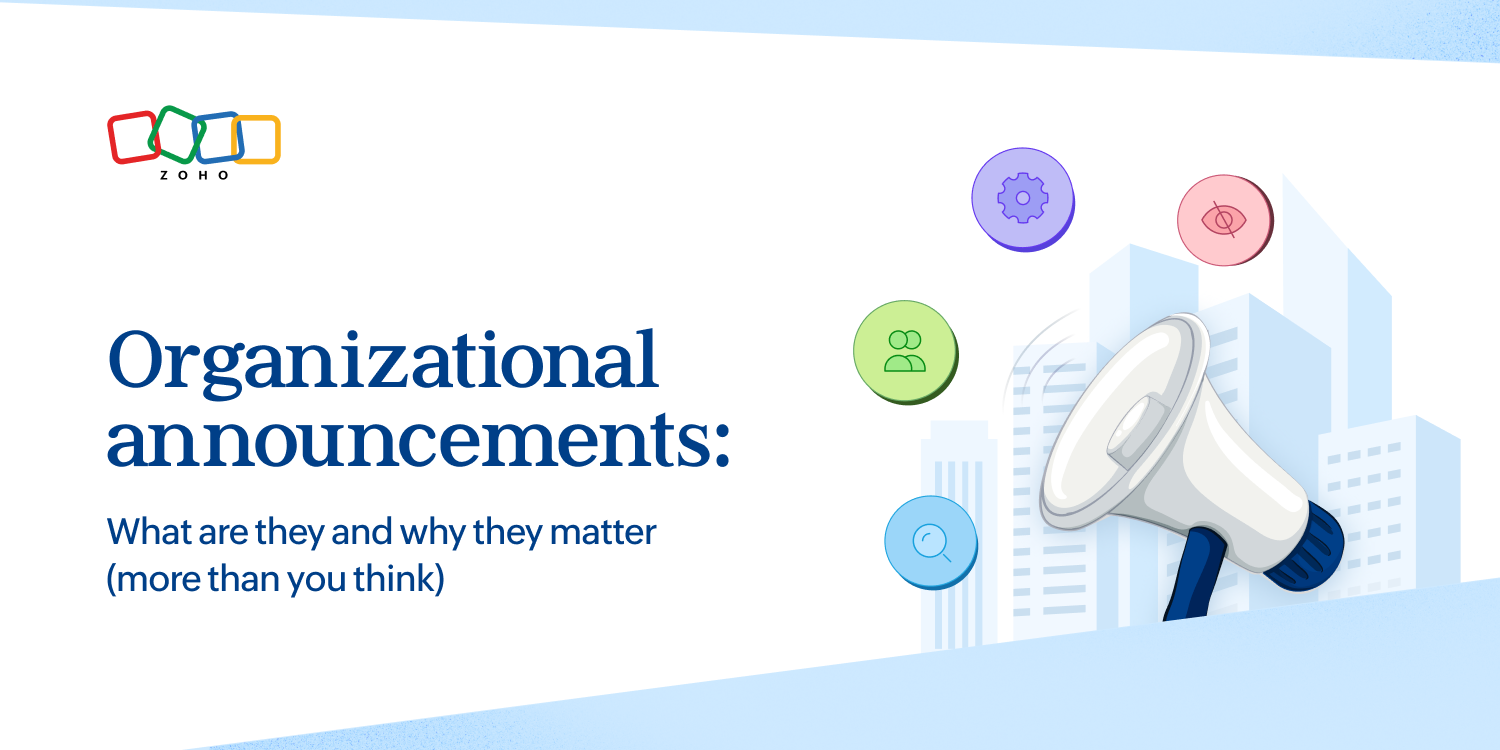- HOME
- All Products
- Collaboration
- Working in collaboration: Best practices for team success
Working in collaboration: Best practices for team success
- Published : September 11, 2024
- Last Updated : October 17, 2024
- 1.2K Views
- 7 Min Read
Recent data shows that people who work in a collaborative setting are 50% more efficient in completing tasks compared to those who work independently. Additionally, collaboration has been shown to reduce turnover by at least 50%.
But what does it take for teams to collaborate effectively and truly unlock the potential of working together?
Let’s take a closer look at the key elements of successful collaboration. On top of this analysis, we’ll also share tips to help your teams communicate more effectively, work more cohesively, and achieve their collective goals.

The importance of collaborative working
Collaboration is essential for driving efficiency and innovation on any team. By working together, team members can combine their strengths and diverse perspectives, leading to more effective problem-solving and better outcomes.
Let’s take a moment to hone in on the benefits of collaboration and how this approach improves performance in the workplace.
1. It enhances problem-solving
When people collaborate, they collectively come up with a variety of perspectives, experiences, and expertise. This diversity enhances problem-solving, allowing teams to approach challenges from different angles and explore a wider range of solutions
Collaborative working fosters better brainstorming, more thorough evaluation of potential solutions, and ultimately, more informed decision-making. Teams are more likely to discover innovative solutions when they collaborate compared to when they work in isolation.
2. It boosts productivity
Collaboration enables teams to divide tasks efficiently, ensuring that everyone contributes according to their strengths. This division of labor allows tasks to be completed more quickly and efficiently.
Recent studies indicate that 70% of employees believe that collaboration increases their productivity and helps them save more time. Collaborative environments also encourage accountability and transparency, which reduces the likelihood of delays or bottlenecks in projects.
3. It fosters innovation
Innovation is often a direct result of collaboration. When professionals from different disciplines work together, they merge their distinct ideas and approaches, leading to the creation of novel solutions and advancements.
Collaboration sparks creativity because team members can challenge each other's ideas and build upon them to develop innovative solutions. Many of the world’s most successful companies, like Google and Apple, emphasize collaboration as a key driver of their innovation.
4. It increases employee engagement and job satisfaction
Employees who work collaboratively often report higher levels of job satisfaction and involvement. Being part of a team that works together towards a shared goal fosters a sense of belonging and purpose.
Collaboration also provides opportunities for individuals to learn from each other, further enhancing their job satisfaction. A study by Stanford University found that workers who feel part of a collaborative team are more motivated and willing to stay at their jobs longer, reducing employee turnover.
Examples of collaborative working in the workplace
Effective collaboration in the workplace leverages the strengths of different team members and departments to achieve goals more efficiently and with better results. Here are a couple of examples that illustrate this in action.
1. Project management teams
Project management is a prime example of collaboration in action. Teams from various departments—such as marketing, sales, and development—come together to tackle complex projects.
In these settings, collaboration revolves around establishing shared goals, efficiently dividing tasks based on each member’s expertise, and maintaining regular updates on progress.
A good example is a marketing project where team members work together to launch a new product. The graphic design team collaborates with content creators, social media managers, and product managers to ensure the launch is successful.
For projects like these, teams can use tools like Zoho ToDo to track progress, share documents, and communicate updates.
2. Cross-functional teams
Cross-functional teams involve employees from various departments working together towards a common objective. This approach is especially valuable in product development or innovation projects, where input from multiple perspectives is essential.
In many organizations, marketing and sales teams collaborate closely to create campaigns that attract and convert leads. The marketing team develops content and promotional materials, while the sales team provides insights into customer needs and shares feedback from previous campaigns.
By aligning their efforts, these teams ensure that marketing strategies are directly supported by sales insights, resulting in more effective campaigns and higher conversion rates.
3. Brainstorming sessions
Brainstorming is a collaborative technique that encourages team members to contribute ideas without judgment. This fosters creativity and helps teams explore various solutions to a problem.
A company aiming to improve employee engagement might hold a brainstorming session where employees from different departments suggest ideas for new initiatives. This can be done in person or through digital platforms like Zoho Cliq, where participants can share ideas in real time. Brainstorming enables the collection of diverse ideas, leading to more innovative solutions.
4. Shared documents and collaborative writing
In many workplaces, documents and presentations are created collaboratively. Teams often use cloud-based tools like Zoho Writer, which allow multiple people to edit and contribute simultaneously,
To use a hypothetical example, a sales team might collaborate on a proposal for a potential client. Each team member focuses on their area of expertise — one person writes about the company’s services, another adds customer testimonials, and a third polishes the language. Working together in real time allows them to complete the document faster and ensure it reflects the strengths of the entire team.
5. Mentorship and peer learning
Collaboration goes beyond task completion; it’s also a powerful tool for continuous learning and development. Mentorship programs, where seasoned employees guide newer team members, exemplify this collaborative approach, helping organizations cultivate stronger and more skilled teams.
Take, for instance, a senior engineer mentoring a junior colleague. The senior imparts valuable knowledge on best practices, coding techniques, and project management. Meanwhile, the junior offers fresh ideas and new perspectives. This reciprocal exchange not only enhances the skills of both individuals but also strengthens the overall team dynamic.
Tips for effective collaborative working
Successful collaboration is crucial to a project’s success. To help your team work together more effectively, consider these practical tips that can lead to better outcomes and a more productive workplace.
1. Set clear goals and expectations
For collaboration to be successful, every team member must be aligned with the project’s goals and understand what is expected of them. Establishing clear goals helps prevent misunderstandings and also ensures that all team members are working towards achieving a common goal.
At the beginning of any project, hold a meeting where team members discuss and agree on the project's overall goals. Assign specific roles and work items to the members in your team based on their strengths and expertise.
This prevents overlap, reduces redundancy, and ensures accountability. When everyone knows their responsibilities, it’s easier to manage the project and track progress.
2. Encourage open and transparent communication
Effective collaboration depends on clear, open, and transparent communication. Individuals on the team need to be in a space where they are comfortable sharing their ideas, giving feedback, and raising concerns without fear of judgment.
Create a culture where communication is prioritized. Hold regular check-ins or stand-up meetings to keep everyone informed and address any issues promptly. Making use of collaborative tools like Zoho Meetings or Zoom can make communication much easier, particularly in hybrid work environments.
3. Foster trust and respect among team members
Collaboration thrives when team members trust and respect each other. Without them, teams may face communication breakdowns and disengagement. Building trust takes time, but it’s a critical component of successful collaboration.
Promote trust by encouraging team-building activities that help colleagues get to know one another better. Give team members space to take ownership of their tasks and offer recognition when they contribute effectively. In a collaborative setting, it's important to value and respect each person’s ideas and input.
4. Promote accountability
Accountability is crucial for ensuring that each team member follows through on their commitments, maintaining momentum, and preventing project delays.
Accountability ensures that each team member follows through on their commitments, helping to maintain momentum and avoid project delays.
Use project management tools to track the progress of work items and their deadlines. Assign specific deadlines and responsibilities to individuals rather than groups, making it clear who is accountable for each part of the project. Regular updates in meetings ensure the team member's accountability.
5. Encourage constructive feedback
Constructive feedback is not only essential for effective collaboration but also for fostering growth and ensuring continuous progress on the team. Teams that give and receive feedback constructively are more likely to evolve and succeed together.
Establish a feedback-friendly environment by scheduling regular reviews of the team’s progress. Focus feedback on specific behaviors and outcomes rather than personal traits, and encourage team members to see feedback as a valuable opportunity for growth.
6. Celebrate milestones and successes
Recognizing achievements, whether large or small, keeps morale high and motivates the team to continue working effectively. Celebrations also emphasize the importance of collaboration in reaching shared goals.
Celebrate both individual and team accomplishments. This could be as simple as acknowledging successes in meetings or organizing events to mark significant milestones. Use tools like Zoho Connect to help recognize and celebrate employee contributions.
7. Be flexible and adaptable
Collaboration requires flexibility because plans may change and team dynamics can shift. Adaptability is key to overcoming challenges and ensuring continued collaboration, even in the face of obstacles.
Stay open to adjusting timelines, responsibilities, or strategies as needed throughout the project. Foster a culture of adaptability within your team, emphasizing the value of flexibility. Tools like Zoho ToDo can assist in making quick adjustments to project timelines and resource allocations.
Conclusion: Cultivating a collaborative work culture
Collaboration is more than just working together—it's about harnessing the collective strengths of a team to achieve something greater than what any individual could accomplish alone. When done right, it transforms the way we work, making teams more innovative, efficient, and resilient.
But effective collaboration doesn't happen by chance. It requires intentional effort, the right tools, and a culture that values teamwork over individual heroics.
 Gary Stevens
Gary StevensGary Stevens is the CTO of Hosting Canada, a website that provides expert reviews on hosting services and helps readers build online businesses and blogs. Gary specializes in topics on cloud technology, thought leadership, and collaboration at work.


